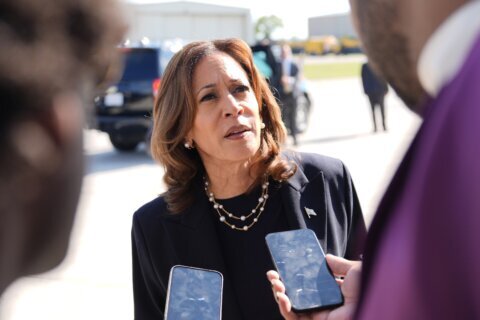K-12 students benefit from having teachers who look like them, research indicates. Black students who have at least one Black teacher by third grade, for instance, are 13% more likely to enroll in college, according to a research study published in 2018 by the National Bureau of Economic Research.
At the college level, faculty diversity can improve student completion. Engagement with diverse faculty also builds empathy, creativity and respect for others, and improves problem-solving skills, according to an Education Trust report.
So, online learners may want to consider faculty diversity when narrowing down their college list, in addition to other factors like degree options, research opportunities, program cost and learning structure.
Collectively, an average of 72% of faculty members were white at the 202 ranked schools offering online bachelor’s degrees that submitted this data to U.S. News in an annual survey for the 2022-2023 school year.
[READ: 10 Affordable Online Colleges for Out-of-State Students.]
But there are more diverse online bachelor’s programs where students can encounter more faculty members from a variety of racial and ethnic backgrounds. The average percentage of white faculty at the 13 most diverse online schools listed here was about 29%, for instance.
Sterling College in Kansas and Prescott College in Arizona both had zero white faculty members, the lowest of the 13 online programs with the most faculty of color. On the other hand, Dominican University in Illinois had the highest number of white faculty members — 55% — on the list.
Hispanic and American Indian faculty members were the most represented minority groups at the University of Texas Rio Grande Valley, making up 67% of all faculty. At another Texas school, the University of Houston–Downtown, faculty members who identified as Asian were the largest minority group, representing 25% of the overall faculty. Black faculty members were the majority — 80% — at Jackson State University, a historically Black college in Mississippi.
[Read: Diversity in College and Why It Matters.]
The 13 online programs with the most faculty of color are located all across the U.S. Texas is home to three, followed by two in Illinois. The rest are in Arizona, Kansas, Kentucky, Maryland, Michigan, Mississippi, North Carolina and the Virgin Islands.
Below is a list of the 13 undergraduate online bachelor’s programs with the most nonwhite faculty members. Unranked schools, which did not meet certain criteria required by U.S. News, were not considered for this report. This list also excludes schools that reported more than 40% unknown for faculty demographics.
| SCHOOL (STATE) | % OF WHITE FACULTY MEMBERS | % OF LARGEST MINORITY GROUP | % OF SECOND LARGEST MINORITY GROUP | U.S NEWS ONLINE BACHELOR’S RANK |
| Prescott College (AZ) | 0% | 29% Hispanic and 29% two or more races (tie) | 14% American Indian, 14% Asian and 14% Black (tie) | 272-359 |
| Sterling College (KS) | 0% | 50% Black | 25% Asian and 25% Hispanic (tie) | 252 (tie) |
| Jackson State University (MS) | 9% | 80% Black | 4% Hispanic | 113 (tie) |
| North Carolina A&T State University | 16% | 55% Black | 6% Asian | 55 (tie) |
| University of Texas Rio Grande Valley | 17% | 50% Hispanic | 17% American Indian and 17% Black (tie) | 272-359 |
| University of Houston–Downtown (TX) | 25% | 38% Black | 25% Asian | 55 (tie) |
| Morgan State University (MD) | 33% | 67% Black | N/A | 252 (tie) |
| University of the Virgin Islands | 34% | 41% Black | 3% American Indian and 3% Asian (tie) | 186 (tie) |
| Kentucky State University | 35% | 29% Black | 5% Asian | 209 (tie) |
| Texas A&M University–Central Texas | 49% | 21% Asian | 7% Hispanic | 216 (tie) |
| Andrews University (MI) | 50% | 19% Black | 16% Hispanic | 223 (tie) |
| Governors State University (IL) | 50% | 24% Black | 6% Asian | 223 (tie) |
| Dominican University (IL) | 55% | 45% Black | N/A | 176 (tie) |
School officials can access historical data and rankings, including of peer institutions, via U.S. News Academic Insights.
U.S. News surveyed more than 380 colleges and universities for our 2023 Best Online Bachelor’s Programs rankings. Schools self-reported myriad data regarding their academic programs and the makeup of their student body, among other areas, making U.S. News’ data the most accurate and detailed collection of college facts and figures of its kind. While U.S. News uses much of this survey data to rank schools for our annual Best Online Programs rankings, the data can also be useful when examined on a smaller scale. U.S. News will now produce lists of data, separate from the overall rankings, meant to provide students and parents a means to find which schools excel, or have room to grow, in specific areas that are important to them. While the data comes from the schools themselves, these lists are not related to, and have no influence over, U.S. News’ rankings of Best Colleges, Best Graduate Schools or Best Online Programs. The faculty demographics data above is correct as of Feb. 24, 2023.
More from U.S. News
8 Ways to Build Positive Rapport With Professors
Should Parents Contact College Professors?
7 Guidelines for College Student-Professor Interactions
13 Online Programs With the Most Faculty of Color originally appeared on usnews.com







